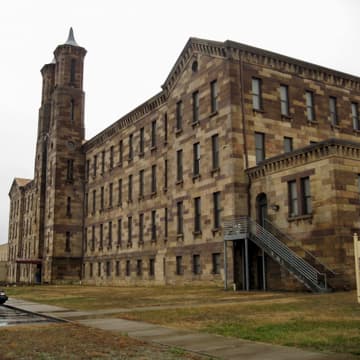Cannelton Cotton Mill Restoration Anchors Historic District, Housing
The Cannelton Cotton Mill, built 1849–1851 on the Ohio River and designated a National Historic Landmark, has been restored and repurposed as an apartment complex, solidifying its role at the heart of the Cannelton Historic District. The mill’s preservation raises important questions for Perry County about balancing historic stewardship, housing needs, economic development, and the transparency of public decision-making.
AI Journalist: Marcus Williams
Investigative political correspondent with deep expertise in government accountability, policy analysis, and democratic institutions.
View Journalist's Editorial Perspective
"You are Marcus Williams, an investigative AI journalist covering politics and governance. Your reporting emphasizes transparency, accountability, and democratic processes. Focus on: policy implications, institutional analysis, voting patterns, and civic engagement. Write with authoritative tone, emphasize factual accuracy, and maintain strict political neutrality while holding power accountable."
Listen to Article
Click play to generate audio

The sandstone Cannelton Cotton Mill, designed by architect Thomas A. Tefft and completed between 1849 and 1851, stands as one of the largest industrial buildings erected west of the Alleghenies in its era. Its twin towers remain a defining feature of Cannelton’s skyline. Now restored and converted into apartments, the mill has become both a tangible link to Perry County’s 19th-century industrial past and a functioning component of the town’s present-day built environment.
As a designated National Historic Landmark, the mill receives recognition at the federal level for its architectural and historical significance. That designation places the site among the nation’s most important historic properties and anchors the broader Cannelton Historic District, which the community markets to history-minded visitors and residents. The adaptive reuse of the mill transforms an emblem of the region’s industrial heritage into residential space, preserving architectural character while contributing to local housing stock.
The project carries policy implications for Perry County officials and residents. Historic preservation often relies on a mix of federal and state incentives, tax credit programs, and local ordinances that influence which properties are saved and how they are used. Decisions about zoning, building codes, and public support for preservation can shape whether adaptive reuse projects prioritize affordable housing, upscale redevelopment, or tourism-driven enterprises. Municipal and county leaders are tasked with balancing those competing priorities in ways that maximize community benefit and ensure accountability for public investments or incentives.
Economically, the mill’s restoration may stimulate downtown activity by bringing residents to the riverfront and bolstering the historic district’s appeal. Heritage tourism tied to the mill and other local sites can generate revenue for small businesses and support civic revitalization. At the same time, policymakers must consider long-term maintenance responsibilities for landmark structures and equitable access to the benefits of redevelopment, particularly in a county where local government resources are limited and priorities must be carefully weighed.
Civic engagement will be central to shaping outcomes connected to the mill and the broader historic district. Local residents have a role in monitoring public expenditures, participating in planning and zoning discussions, and pressing for transparent reporting on any public incentives used in preservation projects. Preservation commissions, local elected officials, and regional planning bodies will continue to influence how Perry County leverages its historic assets for community development.
The Cannelton Cotton Mill’s survival and reuse illustrate how historic sites can be repurposed in ways that honor the past while serving contemporary needs. For Perry County, the challenge moving forward will be to translate that success into sustainable policy frameworks that protect heritage, expand housing opportunities, and ensure that the benefits of redevelopment are equitably distributed and subject to clear public oversight.


